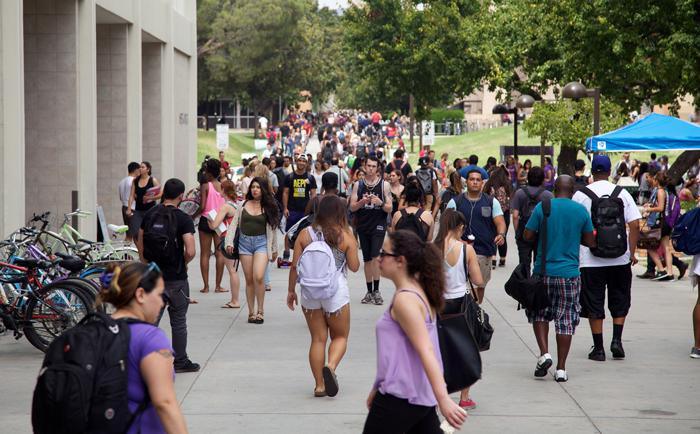In the past weeks, information has come to light about an attempted kidnapping of a CSUN student near campus. Even though the girl was able to escape and file a report on the incident to CSUN Police, we all can relate to the anguish and fear that the girl was feeling in the moments during and after the incident.
We can all agree that everyday we feel a certain level of anxiety of what’s outside our front doors. Even us at The Sundial face that every night we walk to our cars or to our homes, always cautious of what happens behind our backs. Our female editors feel the need to ask to be escorted to their cars by our male editors. Is it right that we should be feeling this type of anxiety on a daily basis?
As a campus, we feel strong emotions when these types of incidents are reported. Solving the issue doesn’t always get the same amount of attention nor does it last as long. Take for instance, measures that CSUN has for addressing rape culture on campus.
To briefly sum it up, the school administration expects students to fulfill a 30 minute video and follow up with a questionnaire to the video on how to spot and prevent rape or sexual assault on and off campus. The measure has its merits such as showing victim’s experiences in the matter and produces some ways in which we as individuals and a community can prevent sexual assault wherever we are. However, the problem with the program is the lack of interest and or effort that students have. Not every student wants to watch a video when they have other things to do, and to have students watch a thirty-minute video and say that that will fix the problem of sexual assault on campus only adds insult to injury.
Though CSUN’s initiative could help prevent sexual assault, other schools have proposed worse solutions that don’t even address the root cause of sexual assault. Take Stanford University’s new policy implemented in response to the Brock Turner incident on their campus. The school banned hard liquor with more than “20 percent of alcohol per volume” (40 proof), though beer and wine are acceptable in certain cases. The school administration says that their “intention is not a total prohibition of a substance, but rather a targeted approach that limits high-risk behavior.” But the fact of the matter is that alcohol is not the root of the problem.
But it’s not just misguided policies, it’s also universities lack of transparency. Take USC for example, according to the Huffington Post, back in 2013, students filed complaints with US Department of education in violation of the Clergy act, their reasoning was that campus police were mislabeling sexual assault and rape incidents as other incidents, like categorizing rape as a “domestic dispute or personal injury,” in order to lower crime rates happening in their school.
According to the Law Street Media, USC is ranked in the top ten for crime rates reported in the country in 2015, with 80 reported cases of forcible sex and an average of 1 percent out of a 1,000 for violent crime rates. Now this report is different from the police report from CSUN. In their reports, CSUN police account for five incidents involving rape on campus.
We as a student population and as a nation have to address this issue head on. There are better ways to solve the problem of sexual assault.
Too many students have to live with a constant paranoia that they could be the next victim of sexual assault, rape, or kidnapping.
Compiled by the editorial staff of The Sundial.
UPDATE* In our print edition we stated that CSUN police only accounted for five out of 10 rapes in their reports. Only five rapes occurred, and they were all reported.






